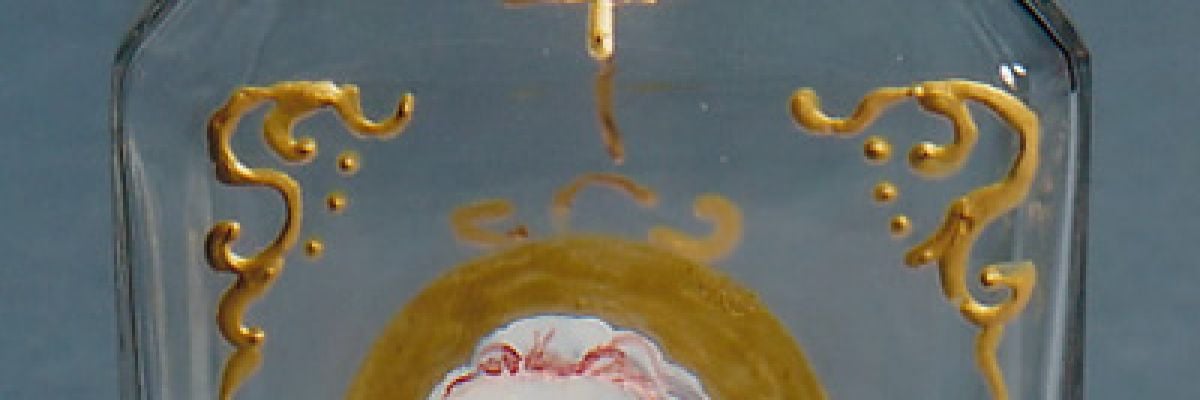
You’re probably wondering if the title of this post contains a typo. It doesn’t. I’ll explain why in a moment. As many of you know, today is the feast of St. Nicholas, the fourth-century Greek Bishop of Myra in Lycia (part of modern-day Turkey) who in the United States and other parts of the world has become identified with Santa Claus.
In the last few days, in anticipation of his feast as well as of Christmas, a number of bloggers have commented on the many fantastical legends associated with this most beloved saint, most of which are apocryphal. However, there is one little-known fact about old St. Nick that I think you will find fascinating: The bone relics of St. Nicholas secrete manna.
St. Nicholas died December 6, A.D. 343 in Myra, and his bones were later transferred to a tomb in Bari, upon which the Cathedral of St. Nicholas was built. From the time of his death to the present day, an oily substance, known as the manna of St. Nicholas (Manna di S. Nicola), which is highly valued for its medicinal powers, is said to come forth from them.
From the St. Nicholas Center (Centro Studi Nicolaiani di Bari):
The “manna of Saint Nicholas,” which was once commonly called “oil,” is actually transparent pure water that is formed in the tomb of the Saint in the crypt of the Basilica in Bari. This phenomenon is not easily explainable. It is absolutely excluded that there is some kind of infiltration of water from the outside, for it has been proven that the casket containing the bones of the Saint is impermeable.
Notwithstanding the various solutions that are arrived at from numerous hypothesis forwarded, whether supernatural or natural explanations of the phenomenon, the manna is an authentic relic, because it is a liquid that remained in contact with the bones of the Saint, and therefore explains the very reason why there is such a great devotion springing up from this relic.
The manna also exuded in the tomb of the Basilica of Myra immediately after the death of Saint Nicholas, as attested to by numerous biographies and eulogies, all are in accord of the exemplary virtue of the miracle worker. The Legends of the translation likewise affirm that the urn containing the remains of Saint Nicholas of Myra was full of “manna.” After the translation to Bari the phenomenon continued uninterruptedly. It is also fully proven that the pilgrims coming to Bari are attracted to the tomb of the Saint in view of the fact that the “manna” is famous because of the miracles St. Nicholas accomplishes through it.
Between 1954 and 1957, the authenticity that this liquid truly came from the bones of the Saint, as was commonly held, was put into question. In 1954, because of the renovation being done in the crypt, the tomb was opened and the bones were exhumed. Then they were placed inside an urn, where it remained exposed to the public to see and venerate for three years in the hall of the treasures (of the Saint in the Basilica). Sometimes it was observed that the bones “perspired” a certain kind of fluid; one time the linen sheet which held the relics was found to be soaking wet when the mortal remains of St. Nicholas were re-interred in the tomb. This linen cloth has been preserved up to this day. From 1980 onwards the manna is formally extracted every May 9, the Feast of the Translation (of the relics from Myra to Bari), by the Rector of the Basilica, in the presence of the delegate of the Pope, the Archbishop of Bari, an Orthodox Bishop, Civil Authorities, the Clergy and Faithful, after the solemn celebration of the Eucharist. The Bishop gives the blessing and after him the Orthodox Bishop too, to the excited assembly of the faithful, with the crystal vial containing the freshly extracted precious liquid, artistically handpainted and is called “glass of St. Nicholas.” The annual output of pure “santa manna” is no more than about 50 ml.
Hence, the Secrete Santa.


